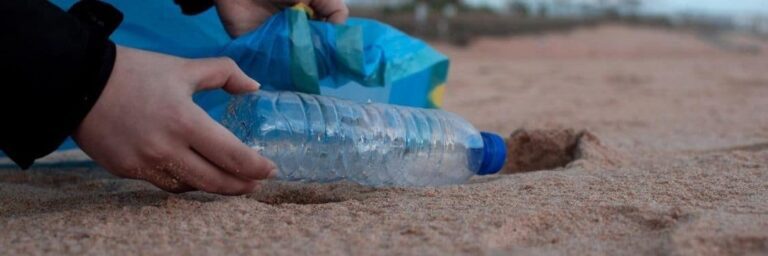After a long day at work, you might crave a warm, relaxing bath. But, upon stepping into your bathroom, you see streaks and grime on the walls and floors, lurking in nooks and deep corners. Yikes! Seeing this fuzzy, unpleasant stuff is a total nightmare for every homeowner.
What are those?
Our bathroom is one of the most frequently used areas in our house. Mould and fungi are common problems in most bathrooms.
They can often be found in the shape of dark spots and patches all over the ceilings, walls, grouts in between the tiles, shower heads, bathtubs, drains or any especially dark and humid corners of the bathroom. They’re generally caused by moisture build-up in a warm, poorly-ventilated space.
Mould and fungi love three things — moisture, warmth, and darkness- making our bathrooms a crazy petri dish where they can grow and multiply. Being infested with these nasty things can aggravate allergies and cause respiratory problems. They can also permanently damage our properties if left unchecked for a long time.
When you see signs of mould and fungi in your bathrooms, act quickly to tackle them before they spread uncontrollably. Here are some tips you can do to prevent and remove them:
1. Scrub surfaces with removal solution
While buying store-bought mould killers for the quickest solution is tempting, they can only provide temporary aid. This is because bleach and other mould cleaners work only to alter the mould and not permanently kill them. Opting for a more natural remedy like vinegar can prevent the mould returning.
You can also use borax soda dissolved in water to make a removal solution. Borax is a natural insecticide and fungicide. It’s slightly harsher than baking soda but arguably the more effective cleaning agent.
Generously spray and scrub to remove the stubborn mould on smooth surfaces and floors. You can also use a toothbrush in between grouts and caulking. Wipe it clean and dry. Wear gloves so you don’t touch mould and fungi with your bare hands.
2. Ventilate your bathroom properly
Make sure your bathroom air flows freely. Our tiled walls and floorings often get wet after every use, and the water will take a while to evaporate, mainly if the bathroom isn’t properly ventilated. Stagnant moisture can be a perfect breeding place for mould and fungi.
It’s important that you find a reputable bathroom tiler in your area to get the job done correctly. There are huge benefits to choosing the right bathroom tiler; make sure to reach their reviews or, ideally hire a tiler from a trusted family member or friend.
Use a squeegee to dry out shower stalls or tubs. You can also install a bathroom exhaust fan to dehumidify the room. They are running the fan for 30 minutes after baths and showers can effectively eliminate excess moisture.
3. Dry towels, mats, and shower curtains
Damp, soft materials like towels, mats and shower curtains can be a prime breeding ground for mould and fungi. This can cause a massive infestation spread throughout your bathroom or even outside. It is important to dry them properly and wash them regularly.
4. Check for cracked tiles and wet drywalls
Once mould and fungi seep into the grout, it’s almost impossible to remove them altogether. If you cannot remove the mould and fungi through scrubbing, re-grouting the affected area may be the best way to eliminate them.
Wet drywall and wood are also highly susceptible to mould and fungi. It’s particularly difficult to remove mould growing in these types of materials. Not to mention, it can attract insects like cockroaches too.
5. Re-paint your bathroom
You might want to slightly renovate your bathroom with semigloss finish paints to create a water-resistant surface. This will prevent the water from getting stuck on your walls and ceilings. Consider using paints formulated with mould and fungi-inhibiting antimicrobial agents to ensure no mould and fungi are re-sprouting.
6. Lighten up the room
Mould and fungi aren’t particularly friends with sunlight. With that, you must frequently open your blinds or windows, replace heavy drapes with sheer curtains, and let the light in. You can also open the shower doors and curtains when not in use, letting the light in and allowing airflow.
7. Maintain a regular cleaning schedule
As mould and fungi feed on organic matter, maintaining a regular bathroom cleaning schedule can also limit the chance of it reappearing. Who would want to take a shower in a dirty bathroom, not just for mould and fungi prevention, right?
8. Call for help
If you’re too busy or the infestation just became out of control, you can call for a professional to do the tedious job. Experts can clean and remove mould safely and in no time. You also have to take out mouldy items that are beyond cleaning.
You can risk throwing them out yourself or call for your trusted waste removal service.
Conclusion
Areas with constant dampness, like bathrooms, are where you can often spot mould and fungi infestations. Ensuring good ventilation and thorough cleaning is one of the best ways to combat mould and fungi growth.
Paul’s Rubbish Removal Sydney will work to satisfy your needs and help in any way we can. Our team will strive to make your moulds clean-up a seamless one!







